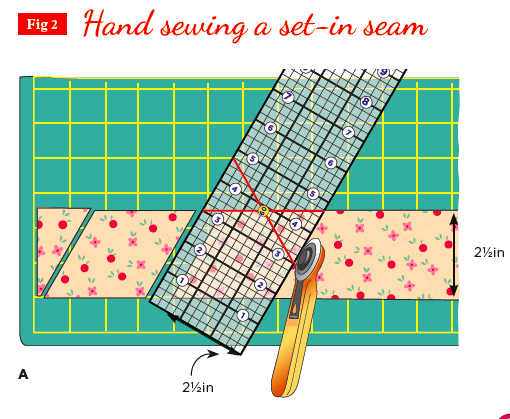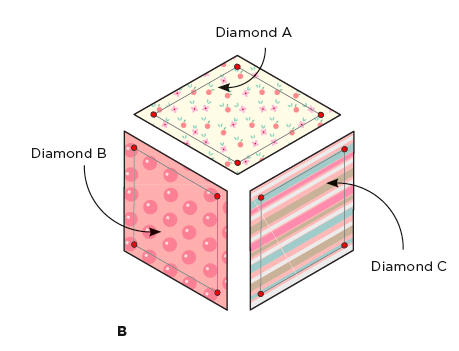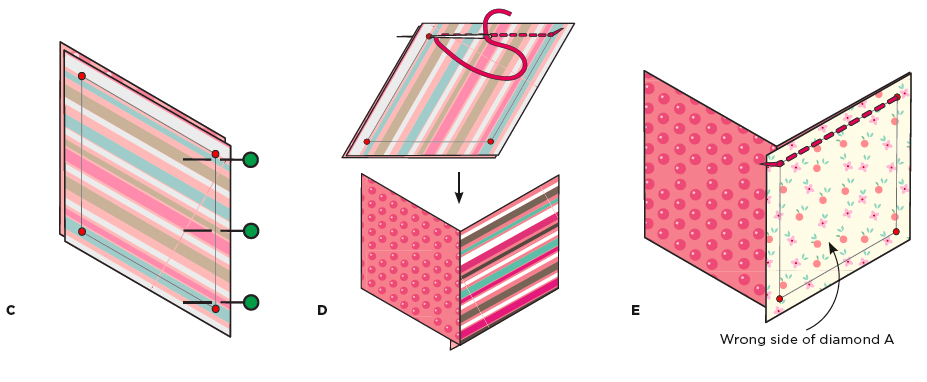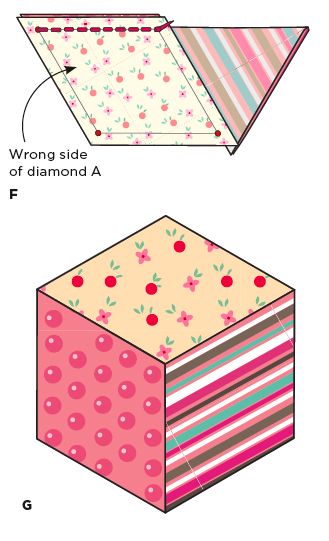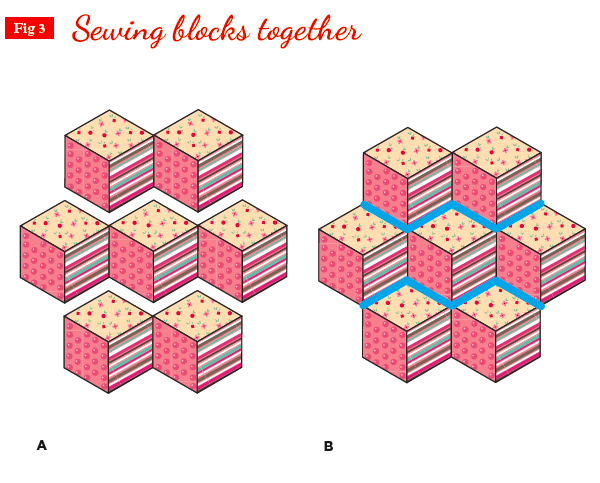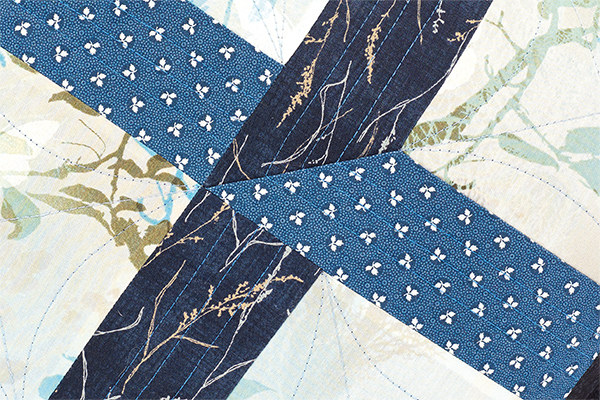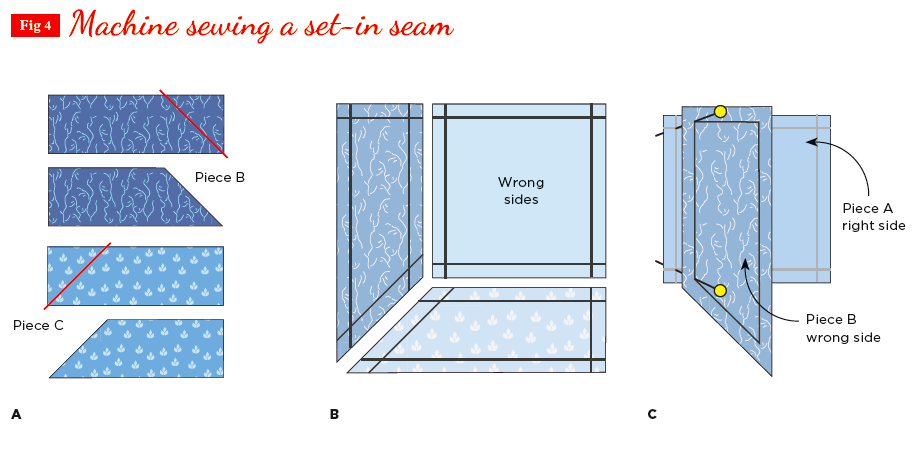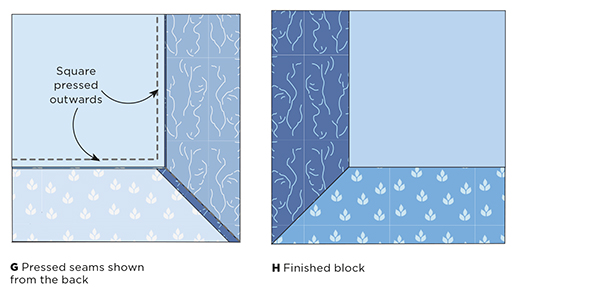Set-in seams are a crucial tool for your quilting repertoire when it comes to sewing quilt blocks with unusual angles. In this taster of our Essential Guide series of next-step quilt tutorials by quilting expert Lin Clements. Today, today we're here to show you how to master set-in seams.
Once you practise a bit, this technique is actually pretty straightforward, so we're here to help you learn to love these seams, plus explain how to use this technique in your quilt block repertoire in the process.
What is a Set-In Seam?
A set-in seam, sometimes called an inset seam or a Y seam, is necessary when three (or more) pieces of fabric that have angles other than 90 degrees meet at one point. Such seams often form a Y shape, hence the name. Set-in seams can be sewn by hand or machine. Many quilters like to hand sew these seams, and for your first time you might like to try the hand method, as it’s a good way to see exactly how the seams fit together.
The process of sewing a set-in seam is also useful if you like to use mitred borders on your quilts, as the same principles apply. If you want to see the wonderful effects that can be created with blocks using these seams then seek out the work of Jinny Beyer. Some block examples are also shown below, and this tutorial will give you detailed instructions on sewing two quilt blocks – Tumbling Block and Attic Windows – so you can practise the technique.
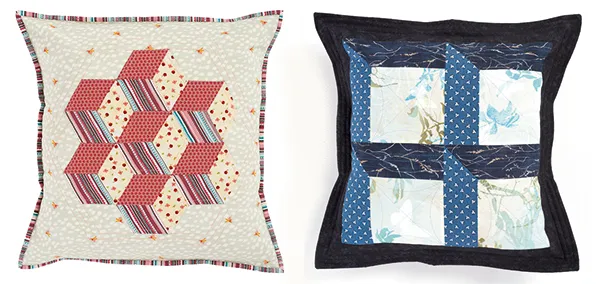
Marking seam allowances
When sewing set-in seams, the stitching line where the pieces meet needs to stop ¼in from the raw edge of a fabric piece, to allow another piece to be inserted. Most people find these seams easier to sew by marking this ¼in on the wrong sides of the fabric pieces. There are various ways you can do this and Fig 1 gives some examples. For your first time sewing a set-in seam you might find method A the most useful. As the technique becomes easier (and it will, very quickly) simple dots or crosses will be sufficient, as in methods B and C. A sharp pencil is usually fine. For darker fabrics try a light-coloured watercolour pencil. This is also a good time to double check that your machine is sewing an accurate ¼in seam.
Fig 1: Methods of marking the seam allowance
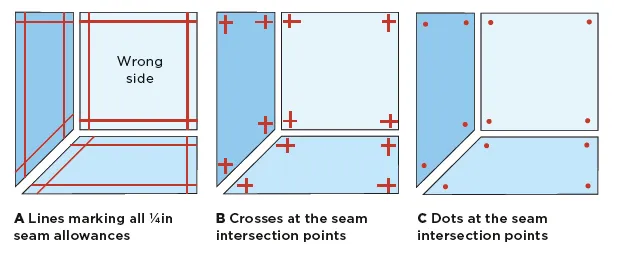
Technical tip
If you plan to make a lot of blocks with set-in seams then instead of using your quilter’s ruler, you might find a seam allowance guide useful. There are various products available. One of the simplest is an acrylic rod in a cube shape that is exactly ¼in wide and about 12in long. It is easier to handle than a large quilter’s ruler.
Blocks using set-in seams
If you want to practise the technique and explore the block possibilities using this method, then try any of the blocks below. The set-in seams are shown by the orange lines on the monotone diagrams. Some of these blocks, such as those that are a hexagon shape once pieced, also need inset seams to join the blocks together.

Read on and we'll show you how to sew a Tumbling Block using a hand sewing method, and Attic Windows using a machine sewing method. The adventurous among you could also explore Roman Mosaic or Morning Star.

Technical tip:
The more complex the block, as in the Roman Mosaic and Morning Star examples, the more accurate your templates and set-in seams need to be, to ensure that all parts of the block fit together. Making these blocks a generous size will also make piecing easier.
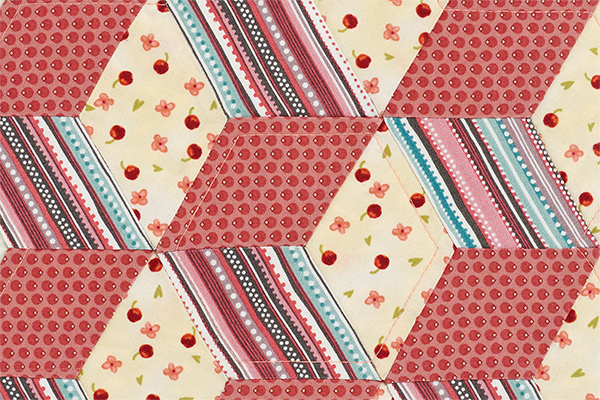 Here we’ll show you how to sew a Tumbling Block as an example.
Here we’ll show you how to sew a Tumbling Block as an example.